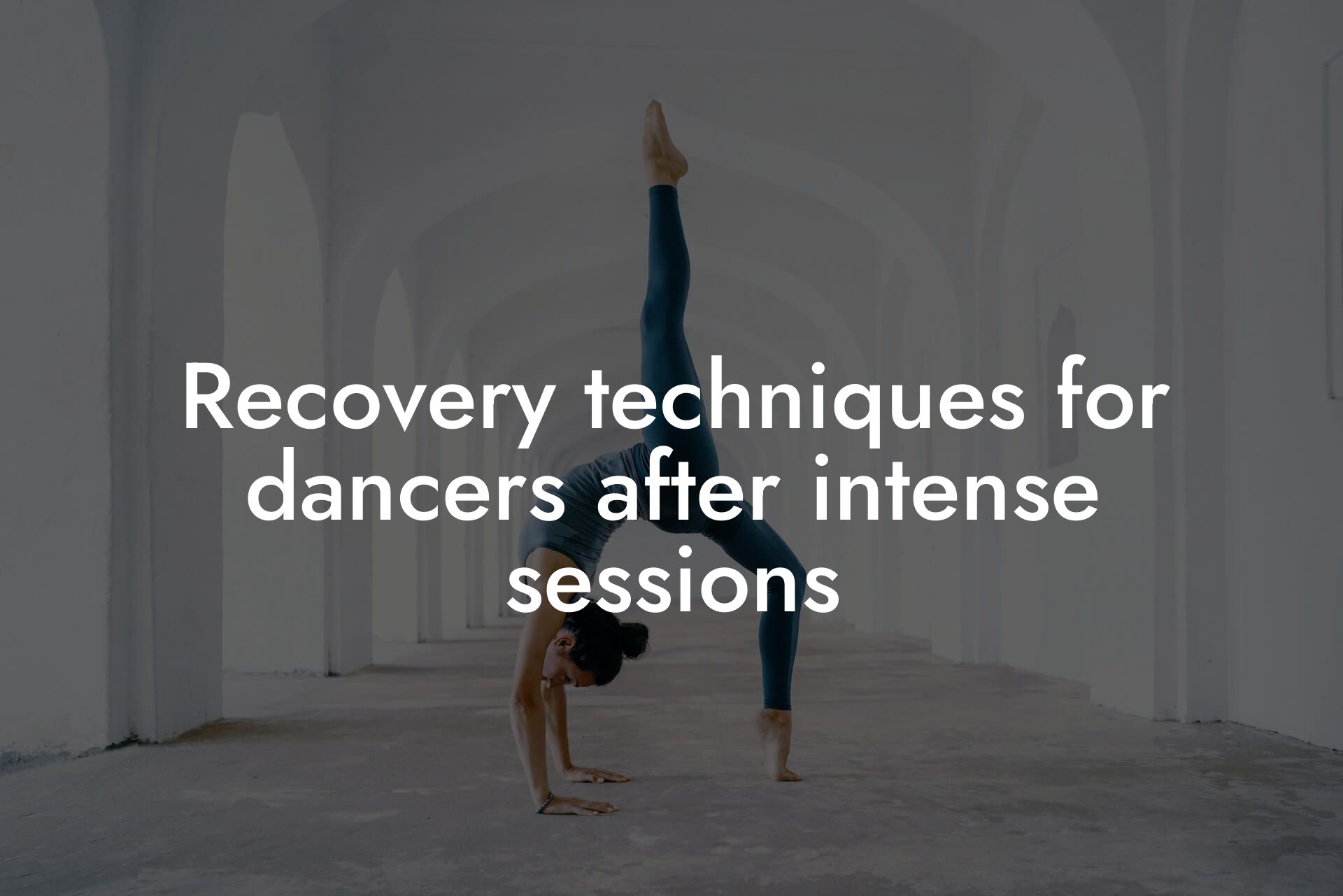As a high-earning professional, you understand the importance of maintaining a fit and healthy physique. Dance fitness is an excellent way to improve cardiovascular health, increase flexibility, and boost overall physical fitness. However, incorporating strength training into your dance fitness routine can take your physical performance to the next level. In this article, we'll explore the benefits of strength training for dance fitness and provide you with practical tips to complement your dance routine.
Table of Contents
- Benefits of Strength Training for Dance Fitness
- Understanding Your Body Composition
- Setting Strength Training Goals
- Essential Strength Training Exercises for Dance Fitness
- Incorporating Strength Training into Your Dance Fitness Routine
- Sample Strength Training Workout for Dance Fitness
- Frequently Asked Questions
Benefits of Strength Training for Dance Fitness
Strength training is often overlooked in dance fitness, but it's a crucial component of overall physical fitness. Here are some benefits of incorporating strength training into your dance fitness routine:
• Improved muscle tone and definition: Strength training helps build lean muscle mass, which can enhance your overall physique and improve your dance performance.
• Increased power and endurance: Strength training can improve your explosive power and endurance, allowing you to perform complex dance movements with ease.
• Enhanced flexibility and mobility: Strengthening your muscles can improve your flexibility and range of motion, making it easier to perform intricate dance movements.
• Reduced injury risk: Strengthening your muscles can help prevent injuries and improve your overall joint stability.
Understanding Your Body Composition
Before we dive into strength training tips, it's essential to understand your body composition. At Tano Performance Group, we use DEXA machine technology to provide a comprehensive body assessment. This assessment helps you understand your body fat percentage, lean muscle mass, bone density, and other vital metrics.
By understanding your body composition, you can tailor your strength training program to target specific areas of improvement. For example, if you have a high body fat percentage, you may want to focus on building lean muscle mass through resistance training.
Setting Strength Training Goals
Before you start strength training, it's essential to set specific, measurable, and achievable goals. Here are some tips to help you set effective strength training goals:
• Identify your weaknesses: Pinpoint areas where you need improvement, such as building strength in your legs or improving your core stability.
• Set specific goals: Instead of setting vague goals, set specific goals like "I want to increase my squat strength by 20% in the next 6 weeks."
• Make a plan: Create a workout plan that outlines your strength training exercises, sets, reps, and frequency.
Essential Strength Training Exercises for Dance Fitness
Here are some essential strength training exercises that can complement your dance fitness routine:
• Squats: Strengthens your legs and glutes, improving your overall dance performance.
• Lunges: Targets your legs, glutes, and core, improving your balance and stability.
• Deadlifts: Works multiple muscle groups, including your legs, glutes, and back, improving your overall strength and power.
• Planks: Strengthens your core, improving your posture, balance, and overall dance performance.
• Leg Press: Targets your legs and glutes, improving your explosive power and endurance.
Incorporating Strength Training into Your Dance Fitness Routine
Here are some tips to help you incorporate strength training into your dance fitness routine:
• Start with 2-3 strength training sessions per week: Aim to do strength training exercises 2-3 times a week, with at least one day of rest in between.
• Focus on compound exercises: Compound exercises like squats, deadlifts, and lunges work multiple muscle groups at once, saving you time and improving overall efficiency.
• Incorporate plyometric exercises: Plyometric exercises like jump squats and box jumps can improve your explosive power and endurance.
• Make it dance-specific: Incorporate strength training exercises that mimic dance movements, such as leg swings and arm circles.
Sample Strength Training Workout for Dance Fitness
Here's a sample strength training workout that you can incorporate into your dance fitness routine:
Warm-up: 5-10 minutes of light cardio and dynamic stretching
Exercise 1: Squats (3 sets of 8-12 reps)
Exercise 2: Lunges (3 sets of 8-12 reps per leg)
Exercise 3: Deadlifts (3 sets of 8-12 reps)
Exercise 4: Planks (3 sets of 30-60 seconds)
Exercise 5: Leg Press (3 sets of 8-12 reps)
Cool-down: 5-10 minutes of static stretching
Incorporating strength training into your dance fitness routine can take your physical performance to the next level. By understanding your body composition, setting specific goals, and incorporating essential strength training exercises, you can improve your overall dance performance and reduce your risk of injury. Remember to start slow, focus on compound exercises, and make it dance-specific to get the most out of your strength training program.
Frequently Asked Questions
What is the importance of incorporating strength training into my dance fitness routine?
As a dancer, incorporating strength training into your fitness routine is crucial to improve your overall performance, prevent injuries, and enhance your physical appearance. Strength training helps build muscle mass, increases bone density, and boosts your metabolism, which can lead to a more toned and lean physique. Additionally, it can improve your power, speed, and agility, allowing you to perform complex dance movements with more ease and confidence.
How does strength training complement my dance fitness routine?
Strength training and dance fitness share a symbiotic relationship. By building strength in your muscles, you can improve your technique, increase your endurance, and enhance your overall dance performance. Strength training can also help you recover faster from intense dance sessions, reducing the risk of injury and fatigue. Furthermore, it can improve your posture, balance, and coordination, making you a more confident and expressive dancer.
What are the benefits of strength training for dancers?
The benefits of strength training for dancers are numerous. It can improve your flexibility, balance, and coordination, while also increasing your power, speed, and agility. Strength training can also help you build lean muscle mass, boost your metabolism, and enhance your bone density, leading to a more toned and healthy physique. Additionally, it can reduce your risk of injury, improve your overall dance performance, and increase your confidence and self-expression.
How often should I incorporate strength training into my dance fitness routine?
Aim to incorporate strength training into your dance fitness routine 2-3 times a week, with at least one day of rest in between. This will allow your muscles to recover and rebuild, making you stronger and more resilient over time. However, be sure to listen to your body and adjust your strength training schedule as needed. If you're just starting out, you may want to start with one or two sessions a week and gradually increase the frequency as your body adapts.
What types of strength training exercises are best for dancers?
As a dancer, you'll want to focus on exercises that target your core, legs, glutes, and upper body. Some effective strength training exercises for dancers include squats, lunges, deadlifts, leg press, calf raises, planks, push-ups, and rows. You can also incorporate plyometric exercises, such as jump squats and box jumps, to improve your power and explosiveness. Additionally, consider incorporating exercises that target your smaller muscle groups, such as your ankles and feet, to improve your overall stability and balance.
Can I use bodyweight exercises or do I need to use weights?
Both bodyweight exercises and weightlifting can be effective for strength training as a dancer. Bodyweight exercises, such as push-ups, squats, and lunges, are great for building functional strength and can be done anywhere. However, weightlifting can provide an added challenge and help you build more significant muscle mass. You can start with lighter weights and progress to heavier weights as you build strength. Ultimately, the choice between bodyweight exercises and weightlifting depends on your personal preference and fitness goals.
How do I incorporate strength training into my busy schedule?
Incorporating strength training into your busy schedule can be challenging, but there are ways to make it work. Consider waking up earlier to fit in a morning strength training session, or try to schedule strength training sessions during your lunch break. You can also break up your strength training sessions into shorter, more manageable chunks, such as 20-30 minutes, 2-3 times a week. Additionally, consider working with a personal trainer or fitness coach who can help you create a customized strength training plan that fits your schedule and goals.
What are some common mistakes dancers make when it comes to strength training?
One common mistake dancers make when it comes to strength training is neglecting to warm up and cool down properly. This can lead to injuries and muscle imbalances. Another mistake is focusing too much on aesthetics, such as building big muscles, rather than functional strength that can improve their dance performance. Additionally, dancers may not incorporate enough variety in their strength training routine, leading to plateaus and stagnation. Finally, dancers may not listen to their bodies and push themselves too hard, leading to burnout and injury.
How do I know if I'm doing strength training exercises correctly?
To ensure you're doing strength training exercises correctly, focus on proper form and technique. This means engaging your core, keeping your shoulders down and away from your ears, and using controlled, slow movements. It's also essential to listen to your body and adjust your form as needed. If you're new to strength training, consider working with a personal trainer or fitness coach who can provide guidance and feedback. Additionally, record yourself doing exercises and review the footage to identify areas for improvement.
Can I strength train at home or do I need to go to a gym?
You can strength train at home or at a gym, depending on your personal preference and goals. If you're just starting out, you may want to start with bodyweight exercises at home and gradually progress to weightlifting at a gym. Having a gym membership can provide access to a variety of equipment and classes, but it's not necessary. You can also invest in home workout equipment, such as dumbbells and resistance bands, to create a home gym. Ultimately, the most important thing is to find a strength training routine that you enjoy and can stick to consistently.
How do I incorporate strength training into my dance class routine?
Incorporating strength training into your dance class routine can be done in a variety of ways. You can start by adding strength training exercises to your warm-up or cool-down routine, such as leg swings, arm circles, and core engagements. You can also incorporate strength training exercises into your dance combinations, such as adding squats or lunges to your choreography. Additionally, consider taking a strength training class specifically designed for dancers, which can help you build functional strength and improve your overall dance performance.
What are some strength training exercises that target my core?
As a dancer, having a strong core is essential for stability, balance, and overall dance performance. Some effective strength training exercises that target your core include planks, Russian twists, leg raises, bicycle crunches, and woodchoppers. You can also incorporate exercises that target your obliques, such as side plank variations and rotational movements. Remember to engage your core during exercises by drawing your belly button towards your spine and maintaining a neutral spine.
How do I know if I'm making progress with my strength training?
To know if you're making progress with your strength training, track your workouts and monitor your progress over time. Take progress photos, measurements, and track your weight, body fat percentage, and other health metrics. You can also track your workout performance, such as the number of reps and sets you're able to complete, and the weight you're lifting. Additionally, pay attention to how you feel, such as increased energy and confidence, and improved overall dance performance.
Can I strength train if I have an injury or chronic condition?
If you have an injury or chronic condition, it's essential to consult with a healthcare professional or fitness expert before starting a strength training program. They can help you create a customized program that takes into account your injury or condition and provides modifications and adaptations to ensure your safety and progress. Additionally, consider working with a personal trainer or fitness coach who has experience working with clients with injuries or chronic conditions.
How does strength training impact my bone density?
Strength training can have a significant impact on your bone density, particularly as you age. Resistance exercises, such as weightlifting and bodyweight exercises, can help stimulate bone growth and density, reducing the risk of osteoporosis and fractures. This is especially important for dancers, who may be at risk for bone loss due to the repetitive impact of dancing. By incorporating strength training into your dance fitness routine, you can improve your overall bone health and reduce your risk of injury.
Can I strength train during pregnancy or postpartum?
If you're pregnant or postpartum, it's essential to consult with a healthcare professional before starting a strength training program. They can provide guidance on safe exercises and modifications to ensure your safety and the health of your baby. In general, strength training can be beneficial during pregnancy and postpartum, as it can help improve your overall health and reduce the risk of complications. However, it's crucial to listen to your body and adjust your strength training routine as needed.
How does strength training impact my metabolism?
Strength training can have a significant impact on your metabolism, particularly as you age. As you build muscle mass through strength training, your resting metabolic rate (RMR) increases, helping you burn more calories at rest. This can lead to weight loss and improved body composition. Additionally, strength training can help improve your insulin sensitivity, reducing your risk of chronic diseases such as diabetes and heart disease.
Can I strength train if I'm a beginner?
Absolutely! Strength training is beneficial for dancers of all levels, including beginners. If you're new to strength training, start with bodyweight exercises or light weights and gradually progress to more challenging exercises and heavier weights. It's also essential to focus on proper form and technique, even if it means starting with slower and more controlled movements. Consider working with a personal trainer or fitness coach who can provide guidance and support as you begin your strength training journey.
How does strength training impact my flexibility and mobility?
Strength training can have a positive impact on your flexibility and mobility, particularly if you incorporate exercises that target your range of motion and flexibility. For example, exercises such as leg swings, arm circles, and hip openers can help improve your flexibility and mobility. Additionally, strength training can help improve your joint stability and reduce your risk of injury, allowing you to move more freely and confidently.
Can I strength train with a partner or in a group?
Yes! Strength training with a partner or in a group can be a fun and motivating way to stay accountable and challenged. Consider taking a group fitness class specifically designed for dancers, or work with a partner who shares your fitness goals. You can also join online fitness communities or forums to connect with other dancers and stay motivated.
Here are some related articles you might love...
- Nutrition tips for sustained energy in dance classes
- How DEXA scans can benefit dance fitness enthusiasts
- Recovery techniques for dancers after intense sessions
- Bone density and its role in dance performance
- The impact of body composition on dance fitness performance
- Balancing strength, flexibility, and grace in dance fitness
- Reducing body fat for improved flexibility and agility in dance
- The role of dance in cardiovascular health
- Maintaining muscle tone and endurance in dance fitness
Zak Faulkner
Zak Faulkner is a leading authority in the realm of physical health and body composition analysis, with over 15 years of experience helping professionals optimise their fitness and well-being. As one the experts behind Tano Performance Group, Zak has dedicated his career to providing in-depth, science-backed insights that empower clients to elevate their physical performance and overall health.
With extensive knowledge of DEXA technology, Zak specializes in delivering comprehensive body assessments that offer precise data on body fat, muscle mass, bone density, and overall physique. His expertise enables individuals to make informed decisions and achieve their fitness goals with accuracy and confidence. Zak’s approach is rooted in a deep understanding of human physiology, combined with a passion for helping clients unlock their full potential through personalised strategies.
Over the years, Zak has earned a reputation for his commitment to excellence, precision, and client-focused service. His guidance is trusted by top professionals who demand the best when it comes to their health. Whether advising on fitness programs, nutritional strategies, or long-term wellness plans, Zak Faulkner’s insights are a valuable resource for anyone serious about taking their health and fitness to the next level.
At Tano Performance Group, Zak continues to lead our Content Team revolutionising how professionals approach their physical health, offering unparalleled expertise that drives real results.




